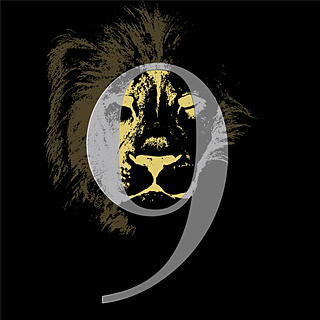OCTOBER
- Nine Lions
- Oct 27, 2020
- 3 min read
Happy October! Fall has officially begun, and with it comes one of Paul's favorite holidays: Halloween! Many of the usual Halloween festivities might not be an option this year–whether that’s trick-or-treating, haunted houses, or costume parties–so one great way to get into the spirit this month is by watching scary movies. As an avid fan of the genre, I think there are many things that distinguish horror films from other types of movies; one particularly notable feature is how the genre has forecasted broader trends in the industry. For example, the current movie era is completely saturated with remakes, reboots and sequels, but the same thing kicked off in horror almost twenty years ago.
By the early 90s, the big slasher franchises that had risen to box office dominance in the 80s had lost their luster—new entries in the series felt like parodies of the earlier movies and were less financially successful as well. This decline in quality and revenue was so noticeable that ‘Friday the 13th’ and ‘Nightmare on Elm Street’ killed off their titular villains in so-called “final” films in the series. However, shortly into the start of the 21st century, two films pumped new blood into the genre specifically by recycling the plots, scares, and iconic monsters of older movies.
In 2002, the massive box office success of Gore Verbinski’s ‘The Ring’ caused American film studios to immediately start purchasing the rights and adapting other successful Asian horror films, and led to the subsequent releases of films such as ‘The Grudge’ in 2004 [ANOTHER remake was released in 2019!], ‘Dark Water’ in 2005, ‘Pulse’ in 2006, ‘One Missed Call’ in 2008, ‘Shutter’ in 2008, and ‘The Eye’ in 2008. One year later, the new production company Platinum Dunes released their debut project: a (relatively) low-budget, gritty remake of Tobe Hooper’s infamous 1974 film, ‘The Texas Chainsaw Massacre.’ Despite a negative critical response, the remake earned almost ten times its budget, and led to an avalanche of more remakes, reboots, and sequels to horror films of the 70s and 80s.
This deluge of remakes was perfectly encapsulated in ‘Scream 4,’ a slasher series that has always functioned as a meta-commentary on the state of the genre. In a climactic scene, the movie-obsessed killer challenges Kirby Reed to “name the remake of [the] groundbreaking horror movie in which the villain–” Before the killer can finish the question, Kirby rattles off over a dozen possible answers: “Halloween, uh, Texas Chainsaw, Dawn of the Dead, The Hills Have Eyes, Amityville Horror, uh, Last House on the Left, Friday the 13th, A Nightmare On Elm Street, My Bloody Valentine, When A Stranger Calls, Prom Night, Black Christmas, House of Wax, The Fog, Piranha. It's one of those, right? Right?” (Without spoiling what happens, the fact that there are easily a dozen more possible answers gives a sense of just how MANY remakes have been made in the past two decades!)
The initial flood of horror movie remakes has subsided over the past five years as the most popular source materials have already been adapted. (That doesn’t mean the remakes have completely stopped: a loose remake of ‘Suspiria’ and a ‘Halloween’ “re-quel” came out in 2018, a new ‘Child’s Play’ premiered in 2019, and a new ‘Candyman’ was scheduled to release this October, but was pushed back to 2021.) Instead, the trend has partially transitioned to other formats: the franchises of Scream, From Dusk till Dawn, The Purge, The Exorcist, Creepshow, Evil Dead, and many more have all been resurrected as television shows. And in 2019, Quirk Books published the newest book by author Clay McLeod Chapman, very fittingly named “The Remaking.”
Chapman’s book is the kind of tale that could only be told by a horror aficionado. Beginning with a true story of superstition and paranoia run amok, “The Remaking” traces how an actual historical event slowly morphs into an urban legend told around campfires, before being turned into a B-movie in the 70s supposedly “inspired by true events.” Inevitably, that film is remade, and later on the entire tale comes full circle as the original story becomes the focus of a true crime podcast. “The Remaking” is very specifically about why audiences find these stories so captivating–why we’re compelled to revisit tales, monsters, and victims even when we’ve seen them countless times before in various films, books, shows, or podcasts.
The cyclical nature of how horror stories are remade—changed, altered, but persistently fascinating and frightening—was precisely what we tried to encapsulate in the book trailer we made for “The Remaking.” You can view it below...if you dare!




Comments